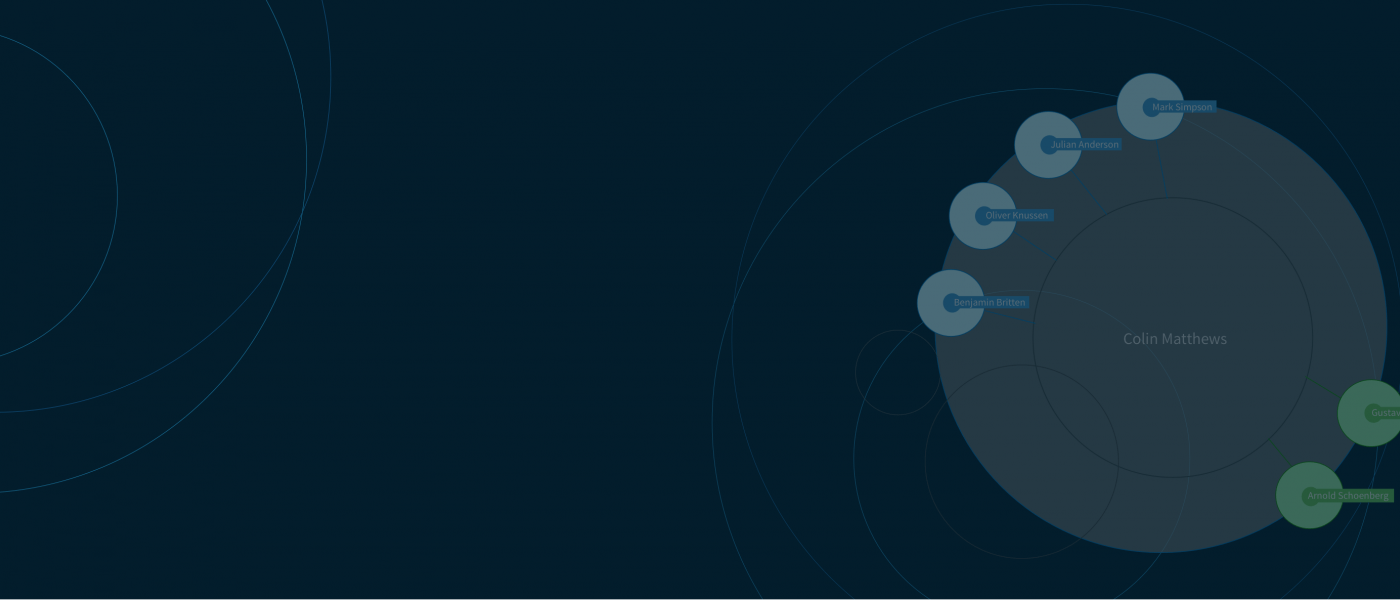Theatre of Attractions: 10 Years On
10th February 2022
Articles PsapphaTo mark the reissue of Theatre of Attractions, 10 years after its original release with Psappha, composer Kenneth Hesketh reflects on the literary and fabulist influences behind the music, and how it contrasts with his writing now.
On the occasion of NMC's reissue of the 2012 Psappha album, Theatre of Attractions, I took the opportunity to put the recorded works into some sort of context a decade since their initial release and nearly three decades since the earliest piece on the disc.
In their way, they are what I refer to as 'fabulist' pieces; their sound surfaces are colourful, the music direct and accessible, and the narrative compact and underpinned by some form of literary stimulus. Other works of mine written at this time - Detail from the record, Netsuke, and Two Lapels and a Pocket - are formed from similar compact responses to texts, and, on this disc, writers such as Italo Calvino and Nikolai Gogol (underlining a magical-realist interest) provided the initial stimuli for Dei Destini Incrociati and Three pieces in the shape of a Shoe respectively. Fra Duri Scogli, a short, creative arrangement based on a madrigal by the Florentine composer Don Paolo di Firenze (c.1355-1436/7), forms a companion piece to Dei Destini Incrociati, the former lending the latter an occasional air of the late medieval/trecento period.
Early film (particularly the work of Georges Méliès) interested me from childhood, and works of mine such as Ein Lichtspiel (after Moholy-Nagy) and the later Hände (Stella F. Simon) form a trio of scores for film, Theatre of Attractions being the first, though sadly this work no longer has a film element (I still hope that can be remedied). A wonderful early 'short' called Liverpool Scenes (1896) by The Lumiere Bros - a film capturing everyday life in the late nineteenth century city - was an initial influence on the narrative organisation, and as Theatre of Attractions was commissioned to celebrate the 400th anniversary of the founding of Quebec with its Liverpudlian trading connection, the Lumiere Bros film proved a useful point of departure with its focus on mercantile ports and bustling shops.
References to technical aspects of early movie making, with unreliable camera gate knocks, poor splicing, and jumping frames are realised both sonically and formally. The solo work, Aphorisms for clarinet, is yet another contribution to the long list of twentieth century solos for the instrument, and shows the influence of language and literature clearly in the title. Written during my summer at Tanglewood in 1995 for the American composer and clarinettist Derek Bermel it marked the beginning of a lasting friendship. The last piece to mention, Three pieces in the shape of a Shoe, despite its seeming reference to Satie, is actually a small suite drawn from material taken from my withdrawn opera after Gogol's The Overcoat. Commissioned by the late John Woolf for PLG, it too is in short dramatic movements, reminiscent of my Cautionary Tales drawn from my work for H.W. Henze's birthday, Netsuke.
A year after Theatre of Attractions however, I consciously sought a notable increase of tension in style and surface sound, ceasing the use of overt literary models. My work Wunderkammer (konzert) (2008) is, in this regard, a transitional work where cryptic and obscure literary references eventually disappear, succeeded by focus on Momento Mori, Vanitas and Mortality (2008 was my 40th birthday...). Works such as Knotted Tongues and Forms Entangled, Shapes Collided (also for Psappha) were the first fruits of working with algorithmic concepts and a greater formalisation.
Currently, a dialectic between different ideas of formal paths (such as labyrinth and maze) help configure basic parameters in my work, alongside the use of abstract graphic influences (In Ictu Oculi, Uncoiling the River, Viae, and Along Dark Paths) and computer assisted compositional input. Such concepts support and focus deeper formal and structural choices, and are no longer superficially mimetic or narratively descriptive. Textures are dense, sounds surfaces saturated and extreme, and the formal shapes less teleological. With the benefit of hindsight, the many literary inferences once prevalent have led to one path, one topic, that of 'the undiscovered country'.
I have often wondered what my child composer self would think if told about his work from 20 years into his future, a child still steeped in Anglican church music and late 19th/ early 20th century orchestral music. I can't imagine what he might say about twice that time and his reaction to the experience of listening to what that same child now writes, but at least I can experience the reverse, rewinding the compositional tape a little, thanks to Psappha and NMC.
NMC's Discover platform is created in partnership with ISM Trust.


